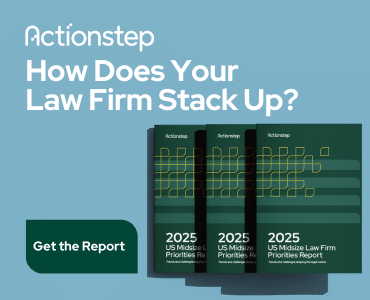Effective legal writing combines articulate argumentation, authoritative citation, and proficient use of tools like the Table of Authorities.

Table of contents
- The Hierarchy and Importance of Legal Authorities
- Selecting and Citing Authorities for Maximum Persuasion
- Using Credibility and Sound Reasoning to Ensure Persuasion
- The Table of Authorities and How to Build It with Legal Authorities Cited
- Marking Citations
- Rules for Citing Legal Authorities
- Editing and Formatting the Table of Authorities
- Use the TOA as a Citation Balancing Tool and Mark Citation
- Troubleshooting Common Issues
- Combine Writing Skills With Technology for Better Legal Advocacy
Effective legal writing connects compelling arguments to cited support from relevant legal authorities. Understanding the hierarchy of these authorities will amplify the strength of your assertions. Tools like Microsoft Word’s Table of Authorities (TOA) feature can improve your productivity.
Combine your legal writing skills with technological assistance to elevate the quality of your work, ensure adherence to court timelines, and help you concentrate on your argument.
The TOA does more than list the citations: It improves the credibility of your arguments and helps you avoid depending too much on certain types of sources — particularly nonbinding secondary sources.
Remember, citations infuse credibility into your writing, bolstering its persuasive power. Effective legal writing combines articulate argumentation, authoritative citation, and proficient use of tools like the TOA.
The Hierarchy and Importance of Legal Authorities
In our legal system, courts refer to previous decisions — precedents — for guidance. Precedents provide consistency and confidence in the law. Binding precedents fall under the doctrine of stare decisis, requiring courts to follow their own decisions and those of higher courts in the same jurisdiction. Persuasive precedents require courts to consider previous decisions for guidance.
Legal authorities fall into three categories: binding primary, persuasive primary, and secondary sources. Each carries a different weight, influencing their impact on legal arguments and their citation order.
- Binding primary sources: Constitutions, statutes, regulations and court rulings carry the most weight. These primary authorities provide binding precedents.
- Persuasive primary sources: Persuasive authorities are primary sources from other jurisdictions or lower courts. These sources are not binding but offer more perspectives.
- Secondary sources: While carrying the least weight, these sources offer valuable analysis of primary sources, adding depth to arguments. Secondary authorities include legal treatises and law review articles. They often bring clarity and insight that enrich legal narratives.
Understanding the weight of different authorities helps you strategically structure arguments to solidly support your claims and highlight the strengths of different sources. Factors like factual relevance, recency and judicial trends influence authority and determine citation order.
Selecting and Citing Authorities for Maximum Persuasion
A persuasive legal brief requires a sound citation plan, dictated by the Bluebook’s guidelines and enhanced by thoughtful, stylish citation strategy. Rule 1.4 of the Bluebook stipulates that authorities should be arranged based on their weight and relevance to the issue. Think of it as an extension of your argument, putting binding precedents first, persuasive precedents second, and secondary authorities last. The right citations can help you convince a court to follow, distinguish or overrule precedent.
After the first citation of an authority is marked with a long citation, subsequent references should be indicated using a short citation format to avoid redundancy and streamline the citation process.
Treat citations as an integral part of the writing, editing and revising process, not mere technicalities. Citations communicate important details about the authority’s weight and validity, such as the issuing court and year of the decision. You need not repeat that data in the prose. During revision, carefully assess citation placement to ensure every legal assertion requiring support is adequately cited.
Using Credibility and Sound Reasoning to Ensure Persuasion
To improve your credibility, make sure the authority you use to support your arguments is sound, properly interpreted, and presented according to Bluebook rules. Even if your legal brief is well written, it may fail if the judge feels your position would require taking legal risks. So, clearly explain why an appellate court would likely adopt your reasoning and conclusions.
The Table of Authorities and How to Build It with Legal Authorities Cited
The TOA, a critical tool in legal writing, provides an organized list of legal citations in a document. It helps readers — including judges and opposing counsel — efficiently locate and review the authorities cited. However, the TOA primarily serves as an alphabetical index of all legal citations in your brief, offering a clear layout and easing navigation and review of references. It isn’t designed to reflect the weight of authority.
To create a TOA in Microsoft Word, follow these steps:
- Identify legal citations in your document for your TOA.
- Determine where your TOA should be placed within the document.
- Position your cursor at the desired location.
- Navigate to the References tab on your Word menu and select the Insert Table of Authorities option.
- Follow the prompts given by Word to create your TOA, selecting your citation format, adjusting settings, and adding citations through the authorities dialog box.
While Microsoft Word offers robust features for creating a TOA, legal professionals may encounter limitations and might need to convert content to text manually or use specialized plugins to enhance their word document for compliance with court requirements.
WordRake has a video tutorial and Legal Office Guru has a written guide with screenshots.
NOTE: TOA requirements may vary by jurisdiction. For example, some jurisdictions require a Table of Points and Authorities (a combined TOA and table of contents).
Marking Citations
Marking citations is an important step in creating a Table of Authorities in Word. To mark a citation, select the text with the citation. Go to the References tab and click Mark Citation. This will open the mark citation dialog box where you can choose the category for the citation (cases, statutes, other authorities etc). Once you’ve chosen the category click Mark.
For subsequent citations select the text and click Mark Citation again. The dialog box will pop up with the previously marked citation information so you can check for consistency. You can also use the shortcut key ALT+SHIFT+I to mark citations. This will ensure all necessary citations are in your TOA and make your legal document more credible and navigable.
Rules for Citing Legal Authorities
When citing legal authorities you must follow the rules and guidelines of the jurisdiction or court. The “Bluebook: A Uniform System of Citation” is used in many jurisdictions, others have their own style manuals like the “California Style Manual” or the “Texas Greenbook”.
A Table of Authorities can be grouped in many ways, by category (cases, statutes and other authorities), or by federal cases and state cases, or by state and local statutes. Be sure to check the rules and guidelines of the jurisdiction or court to ensure accuracy and proper citation. Following the rules not only ensures compliance but also makes your legal writing more persuasive by presenting the authorities clearly.
Editing and Formatting the Table of Authorities
Once the Table of Authorities is created you can edit and format it to your needs. To edit a Table of Authorities entry locate the TA field for the entry you want to modify and change the text inside the quotes. This allows you to fix errors or update the citation information.
To update the Table of Authorities click to the left of the table and press F9. This refreshes the table so all marked citations are correct. You can also format the Table of Authorities using the Styles associated with it, such as changing the font, size and color to match the rest of your document. You can also use the Mark Citation dialog box to re-define categories 8-16 by selecting the next number and typing the category name in “Replace with”. This way your TOA will be accurate and visually consistent with your legal document.
Use the TOA as a Citation Balancing Tool and Mark Citation
Your TOA serves as more than a reference list — it’s a strategic tool for assessing and improving your legal writing and citation practices, which makes it a valuable part of your legal writing strategy. For example, it can be useful in helping you notice an imbalance of references in these situations:
- Overcitation: Unnecessary repetition or excessive citations can clutter your prose and diminish the impact of your strongest authorities. Carefully assess your citation placement during revision to ensure every assertion requiring support is cited but not overdone.
- Overuse of string cites: String cites are lists of citations that all support the same point. Using too many can make your argument confusing. The TOA can reveal if you’re relying too much on these, pushing you to reconsider your choices and achieve balance.
- Overreliance on secondary sources: If no mandatory authority exists in your jurisdiction, persuasive authority from a higher court or a court at the same level could be your best choice. Be mindful, though — if your TOA is mostly citing secondary sources, you might need to revisit your research and argument. Strengthen your argument with more binding authority to give the judge the confidence they need to make a favorable decision.
Troubleshooting Common Issues
Common issues that may arise when creating a Table of Authorities include incorrect citations, missing authorities, and formatting problems. To troubleshoot these issues, first check the marked citations to ensure they are accurate and complete. Use the Show/Hide button to reveal hidden text and field codes, which can help identify any errors or omissions.
If citations are missing from the TOA, use the Update Table of Authorities button to refresh the table and ensure all citations are included. Formatting problems can often be resolved by adjusting the Styles associated with the TOA or by manually editing the TA fields. If you encounter persistent issues, refer to Microsoft Word help resources or seek assistance from a legal writing expert. By addressing these common problems, you can ensure that your TOA is comprehensive, accurate, and professionally presented.
Combine Writing Skills With Technology for Better Legal Advocacy
Mastering legal writing requires an approach that balances clarity, persuasiveness, and a comprehensive understanding of legal authorities and technology. Integrating Microsoft Word’s TOA and other tools into your writing process helps legal professionals meet court deadlines and improves overall legal writing quality. Save valuable time you can better use to effectively communicate persuasive arguments.
Photo by Kaitlyn Baker on Unsplash
Image © iStockPhoto.com.

Sign up for Attorney at Work’s daily practice tips newsletter here and subscribe to our podcast, Attorney at Work Today.
















